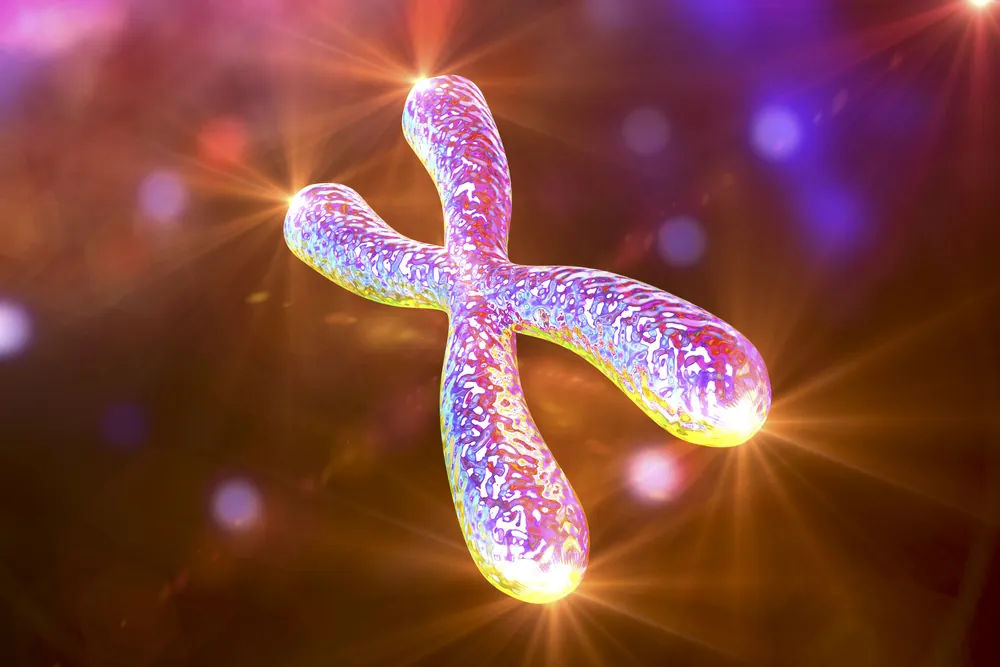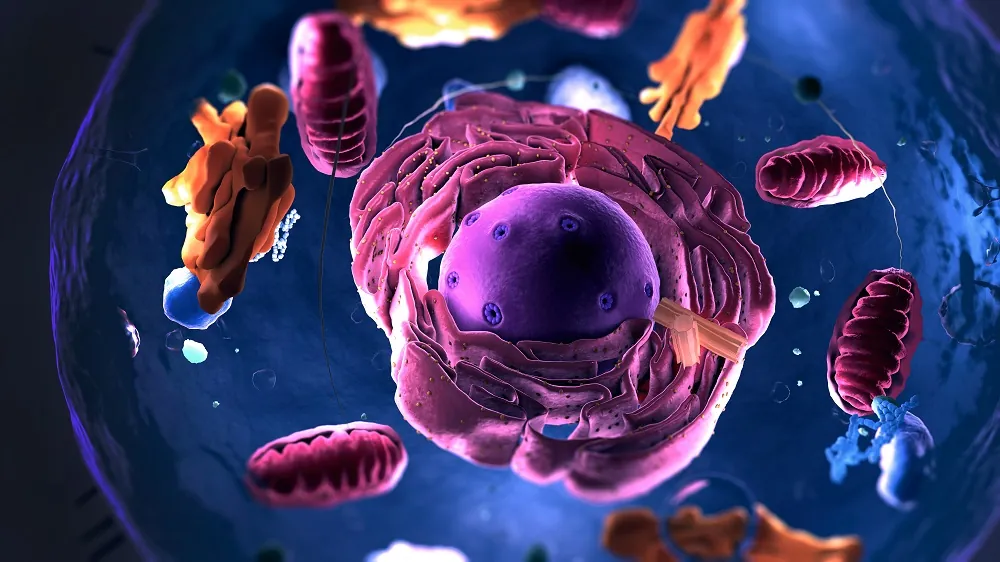An extremely comprehensive review published in Food Science & Biotechnology has summarized the current state of research regarding cellular senescence and basic dietary components.
An aging-focused outlook
The researchers begin their paper with a discussion of aging, citing a paper that frames it in terms of homeostasis and physiological decline [1]. They discuss its primacy in disease and its complexity, citing older and recent papers that focus on our need for a more fundamental understanding of its biology, including a 2021 paper by the venerable Leonard Hayflick [2].
This paper notes that some research has shown cellular senescence to be a causative factor in multiple age-related pathologies [3]. The authors point out that the only current techniques that are known to actually influence aging are exercise, lifestyle, and nutrition, citing the concept of ‘nutrigerontology’ as described by Kris Verburgh [4]. They then go into a more detailed discussion of cellular senescence, describing the SASP, the relationship of senescent cells to such diseases as cancer and atherosclerosis, and the connection between senescence and immunity.

Read More
Carbohydrates
This paper then examines research focusing on the relationship between basic food components and cellular senescence. The researchers first point out that excessive carbohydrate consumption is, naturally, linked to obesity [5], but they also note that choosing a low-carb diet is not always beneficial [6].
Interestingly, multiple studies have shown that complex carbohydrates known as polysaccharides have beneficial effects on multiple aspects of aging. For example, one study showed that one polysaccharide reduced the age-related inflammation known as inflammaging in a mouse model [7] by improving nutrient sensing. Trehalose, a disaccharide of glucose, also improved lifespan in the common aging model C. elegans by influencing insulin sensing [8].
While a great many other individual carbohydrates have been linked to positive effects in model organisms, the fact remains that a diet that contains too many carbohydrates as a whole is linked to increased mortality in human beings [9].
Proteins
While amino acids and proteins are required for human health, the researchers cite studies showing that a high-protein diet is not helpful. Some research has shown that a 1:10 ratio of protein to carbohydrate intake has a positive influence on aging [10]. Another study undertaken by Morgan Levine et al. has shown that a high-protein diet dramatically increases all-cause mortality and quintuples the rate of cancer in the elderly [11]. The potential reasons are varied, but they include such issues as a depletion of NAD+, which has been shown in a healthy human cohort [12].
On the other hand, some specific proteins and amino acids are linked to longevity. Branched-chain amino acids positively affected mitochondria and alleviated the effects of oxidative stress in a mouse model [13]. Another study showed that these amino acids lengthen telomeres and thereby reduce cellular senescence [14]. The authors feel that more research needs to be done in connecting the SASP to protein intake.
Fats, vitamins, and minerals
The researchers turn their attention to the third main source of energy that we consume: fats. They note that fats are signaling molecules and that omega-3 fatty acids are beneficial against multiple age-related issues, including osteopenia, inflammation, and diabetes [15]. The researchers do not discuss fat consumption as a percentage of caloriic intake, however.
This paper then discusses how certain vitamins and minerals may have significant implications in reducing cellular senescence. Some studies have shown that zinc deficiency may be a significant contributor to senescence [16], and another study has linked chronic magnesium deficiency to senescence in fibroblasts [17]. Iron metabolism is also strongly linked to senescence, and one senolytic drug uses it to remove senescent cells [18].
Vitamin D is linked to cellular senescence, which has been demonstrated in the context of obesity [19], and it is connected to longer telomeres [20]. Deficiencies in other vitamins, including Vitamin E and Vitamin B2, are linked to shorter telomeres and accelerated senescence.

Read More
Other compounds
Finally, the researchers bring up two more well-known categories of compounds: polyphenols and probiotics. The researchers cite a great many studies outlining the benefits of specific polyphenols, such as the antioxidant and senolytic compound quercetin [21] and the well-known longevity-associated compound resveratrol [22].
Probiotics are compounds that enhance the gut bacteria. The human gut changes with aging, and the researchers point to one particular study showing that gut dysbiosis increases the risk of liver cancer through increasing cellular senescence [23]. As the gut bacteria greatly affect how the human body digests food, it is obvious that they can deliver helpful or harmful compounds, even compounds that affect senescence and other aspects of aging. Intentionally influencing this is the focus of gerobiotics [24].
Conclusion
The relationship between nutrition and aging is obviously extremely complicated, and not all studies prove causative effects, particularly in specific human populations. Other than obvious issues regarding overconsumption and malnutrition, there are few quick fixes to be found in dietary interventions, and there certainly aren’t any miracle cures.
However, the downstream consequences of diet are clear. Aging is damage over time, and the ways in which unhealthy diets lead to increases in damage are varied. It is, therefore, obvious to anyone who wants to live a long time that one of the clearest and most readily available interventions for longevity is to eat a healthy and varied diet that is rich in beneficial compounds but limited in simple sugars.
Literature
[1] van Beek, J. H., Kirkwood, T. B., & Bassingthwaighte, J. B. (2016). Understanding the physiology of the ageing individual: computational modelling of changes in metabolism and endurance. Interface Focus, 6(2), 20150079.
[2] Hayflick, L. (2021). The greatest risk factor for the leading cause of death is ignored. Biogerontology, 22(1), 133-141.
[3] Borghesan, M., Hoogaars, W. M. H., Varela-Eirin, M., Talma, N., & Demaria, M. (2020). A senescence-centric view of aging: implications for longevity and disease. Trends in Cell Biology, 30(10), 777-791.
[4] Verburgh, K. (2015). Nutrigerontology: why we need a new scientific discipline to develop diets and guidelines to reduce the risk of aging‐related diseases. Aging Cell, 14(1), 17-24.
[5] Kelly, T., Unwin, D., & Finucane, F. (2020). Low-Carbohydrate diets in the management of obesity and type 2 diabetes: a review from clinicians using the approach in practice. International journal of environmental research and public health, 17(7), 2557.
[6] Mooradian, A. D. (2020). The merits and the pitfalls of low carbohydrate diet: a Concise review. The journal of nutrition, health & aging, 24(7), 805-808.
[7] Zhao, Y., Liu, X., Zheng, Y., Liu, W., & Ding, C. (2021). Aronia melanocarpa polysaccharide ameliorates inflammation and aging in mice by modulating the AMPK/SIRT1/NF-κB signaling pathway and gut microbiota. Scientific reports, 11(1), 1-15.
[8] Honda, Y., Tanaka, M., & Honda, S. (2010). Trehalose extends longevity in the nematode Caenorhabditis elegans. Aging cell, 9(4), 558-569.
[9] Dehghan, M., Mente, A., Zhang, X., Swaminathan, S., Li, W., Mohan, V., … & Garcia, R. (2017). Associations of fats and carbohydrate intake with cardiovascular disease and mortality in 18 countries from five continents (PURE): a prospective cohort study. The Lancet, 390(10107), 2050-2062.
[10] Le Couteur, D. G., Solon-Biet, S., Cogger, V. C., Mitchell, S. J., Senior, A., de Cabo, R., … & Simpson, S. J. (2016). The impact of low-protein high-carbohydrate diets on aging and lifespan. Cellular and Molecular Life Sciences, 73(6), 1237-1252.
[11] Levine, M. E., Suarez, J. A., Brandhorst, S., Balasubramanian, P., Cheng, C. W., Madia, F., … & Longo, V. D. (2014). Low protein intake is associated with a major reduction in IGF-1, cancer, and overall mortality in the 65 and younger but not older population. Cell metabolism, 19(3), 407-417.
[12] Seyedsadjadi, N., Berg, J., Bilgin, A. A., Braidy, N., Salonikas, C., & Grant, R. (2018). High protein intake is associated with low plasma NAD+ levels in a healthy human cohort. PLoS One, 13(8), e0201968.
[13] D’Antona, G., Ragni, M., Cardile, A., Tedesco, L., Dossena, M., Bruttini, F., … & Nisoli, E. (2010). Branched-chain amino acid supplementation promotes survival and supports cardiac and skeletal muscle mitochondrial biogenesis in middle-aged mice. Cell metabolism, 12(4), 362-372.
[14] Zhang, Y., Zhou, Q., Yang, R., Hu, C., Huang, Z., Zheng, C., … & Sun, L. (2020). Serum branched-chain amino acids are associated with leukocyte telomere length and frailty based on residents from Guangxi longevity county. Scientific Reports, 10(1), 1-8.
[15] Cugno, C., Kizhakayil, D., Calzone, R., Rahman, S. M., Halade, G. V., & Rahman, M. M. (2021). Omega-3 fatty acid-rich fish oil supplementation prevents rosiglitazone-induced osteopenia in aging C57BL/6 mice and in vitro studies. Scientific reports, 11(1), 1-18.
[16] Malavolta, M., Costarelli, L., Giacconi, R., Basso, A., Piacenza, F., Pierpaoli, E., … & Ford, D. (2017). Changes in Zn homeostasis during long term culture of primary endothelial cells and effects of Zn on endothelial cell senescence. Experimental Gerontology, 99, 35-45.
[17] Killilea, D. W., & Ames, B. N. (2008). Magnesium deficiency accelerates cellular senescence in cultured human fibroblasts. Proceedings of the National Academy of Sciences, 105(15), 5768-5773.
[18] Go, S., Kang, M., Kwon, S. P., Jung, M., Jeon, O. H., & Kim, B. S. (2021). The senolytic drug JQ1 removes senescent cells via ferroptosis. Tissue Engineering and Regenerative Medicine, 18(5), 841-850.
[19] Bima, A., Eldakhakhny, B., Nuwaylati, D., Alnami, A., Ajabnoor, M., & Elsamanoudy, A. (2021). The Interplay of Vitamin D Deficiency and Cellular Senescence in The Pathogenesis of Obesity-Related Co-Morbidities. Nutrients, 13(11), 4127.
[20] Mazidi, M., Michos, E. D., & Banach, M. (2017). The association of telomere length and serum 25-hydroxyvitamin D levels in US adults: the National Health and Nutrition Examination Survey. Archives of Medical Science, 13(1), 61-65.
[21] Sohn, E. J., Kim, J. M., Kang, S. H., Kwon, J., An, H. J., Sung, J. S., … & Choi, J. S. (2018). Restoring effects of natural anti-oxidant quercetin on cellular senescent human dermal fibroblasts. The American journal of Chinese medicine, 46(04), 853-873.
[22] Giovannelli, L., Pitozzi, V., Jacomelli, M., Mulinacci, N., Laurenzana, A., Dolara, P., & Mocali, A. (2011). Protective effects of resveratrol against senescence-associated changes in cultured human fibroblasts. Journals of Gerontology Series A: Biomedical Sciences and Medical Sciences, 66(1), 9-18.
[23] Yoshimoto, S., Loo, T. M., Atarashi, K., Kanda, H., Sato, S., Oyadomari, S., … & Ohtani, N. (2013). Obesity-induced gut microbial metabolite promotes liver cancer through senescence secretome. Nature, 499(7456), 97-101.
[24] Tsai, Y. C., Cheng, L. H., Liu, Y. W., Jeng, O. J., & Lee, Y. K. (2020). Gerobiotics: Probiotics targeting fundamental aging processes. Bioscience of microbiota, food and health.






